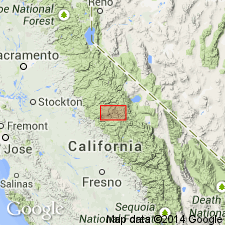
- Usage in publication:
-
- Sentinel granodiorite*
- Modifications:
-
- Named
- Dominant lithology:
-
- Granodiorite
- AAPG geologic province:
-
- Sierra Nevada province
Summary:
Named for Sentinel Rock [37 deg 43' 43"N, 119 deg 35' 45"W, Mariposa Co, CA], Yosemite National Park. Is oldest unit in Tuolumne intrusive series. Comprises Sentinel Rock and constitutes greater part of both walls of Yosemite Valley from Three Brothers nearly to Royal Arches and from the Fissures east to Glacier Point. Is less uniform in composition than most other intrusive bodies. In western part of zone crossed by Yosemite Valley is relatively light-colored and homogeneous but in eastern part unit is darker and more streaky and contains many dark inclusions. Is in contact with Taft and El Capitan biotite granites which are older. Probably Cretaceous(?) age.
Source: GNU records (USGS DDS-6; Menlo GNULEX).
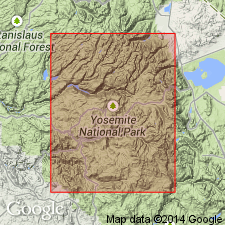
- Usage in publication:
-
- Sentinel granodiorite*
- Modifications:
-
- Geochronologic dating
- AAPG geologic province:
-
- Sierra Nevada province
Summary:
K-Ar age on biotite of Sentinel granodiorite gave 88.4 Ma.
Source: GNU records (USGS DDS-6; Menlo GNULEX).
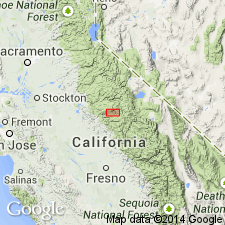
- Usage in publication:
-
- Sentinel granodiorite*
- Modifications:
-
- Age modified
- AAPG geologic province:
-
- Sierra Nevada province
Summary:
Described as generally medium-dark gray and medium-granular but varies widely. Near contacts with El Capitan tends to be darker and more or less foliated. Plagioclase predominates over potassium feldspar; quartz is inconspicuous; biotite fairly abundant. K-Ar age is 86.4 Ma. [Age of Sentinel Granodiorite changed from Cretaceous(?) to Cretaceous.]
Source: GNU records (USGS DDS-6; Menlo GNULEX).
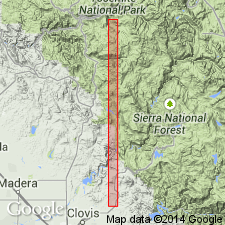
- Usage in publication:
-
- Sentinel Granodiorite*
- Modifications:
-
- Geochronologic dating
- Age modified
- AAPG geologic province:
-
- Sierra Nevada province
Summary:
Concordant K-Ar age on hornblende, biotite, and orthoclase from same specimen of Sentinel Granodiorite yielded 90 Ma. Age changed from Cretaceous to Late Cretaceous.
Source: GNU records (USGS DDS-6; Menlo GNULEX).
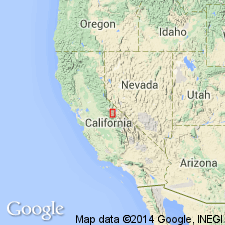
- Usage in publication:
-
- Sentinel Granodiorite*
- Modifications:
-
- Revised
- AAPG geologic province:
-
- Sierra Nevada province
Summary:
Western part of Sentinel Granodiorite (Calkins, 1930) "including the rock at Sentinel Rock, the type locality, does not belong to the Tuolumne Intrusive Series" p.466. east part which does belong to series is informally designated as tonalite of Glacier Point.
Source: GNU records (USGS DDS-6; Menlo GNULEX).
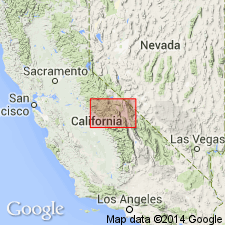
- Usage in publication:
-
- Sentinel Granodiorite*
- Modifications:
-
- Revised
- AAPG geologic province:
-
- Sierra Nevada province
Summary:
Included as possible earlier unit of Tuolumne Intrusive Suite. Typical Sentinel Granodiorite resembles Half Dome Granodiorite in being equigranular and containing well-formed crystals of hornblende and biotite and abundant crystals of sphene. Assigned Late Cretaceous age.
Source: GNU records (USGS DDS-6; Menlo GNULEX).
For more information, please contact Nancy Stamm, Geologic Names Committee Secretary.
Asterisk (*) indicates published by U.S. Geological Survey authors.
"No current usage" (†) implies that a name has been abandoned or has fallen into disuse. Former usage and, if known, replacement name given in parentheses ( ).
Slash (/) indicates name conflicts with nomenclatural guidelines (CSN, 1933; ACSN, 1961, 1970; NACSN, 1983, 2005, 2021). May be explained within brackets ([ ]).

